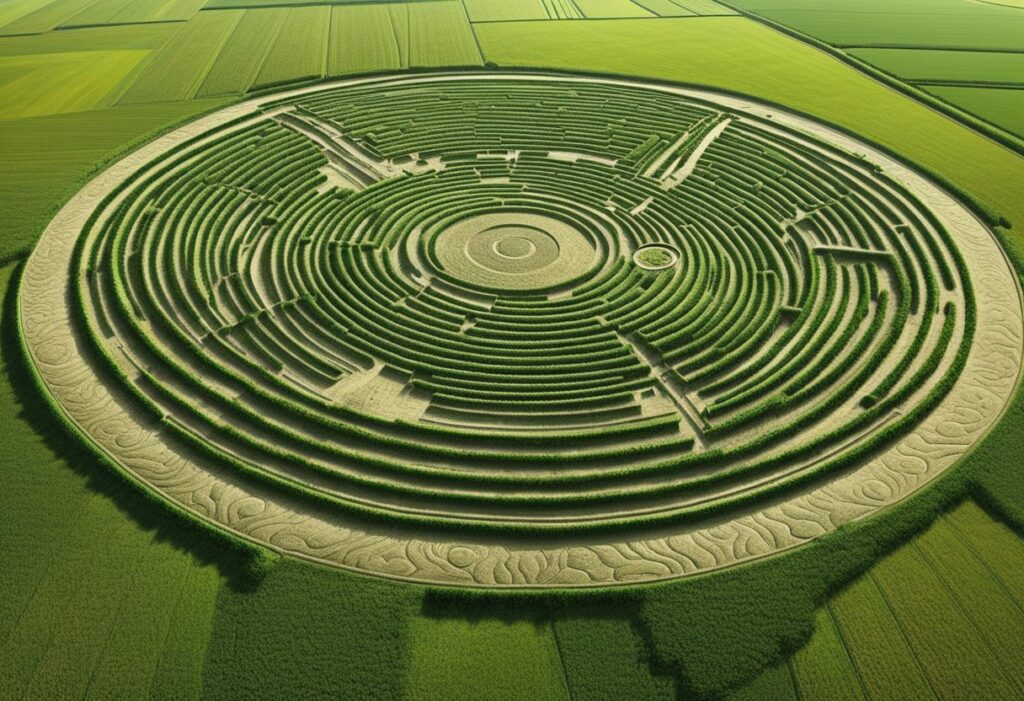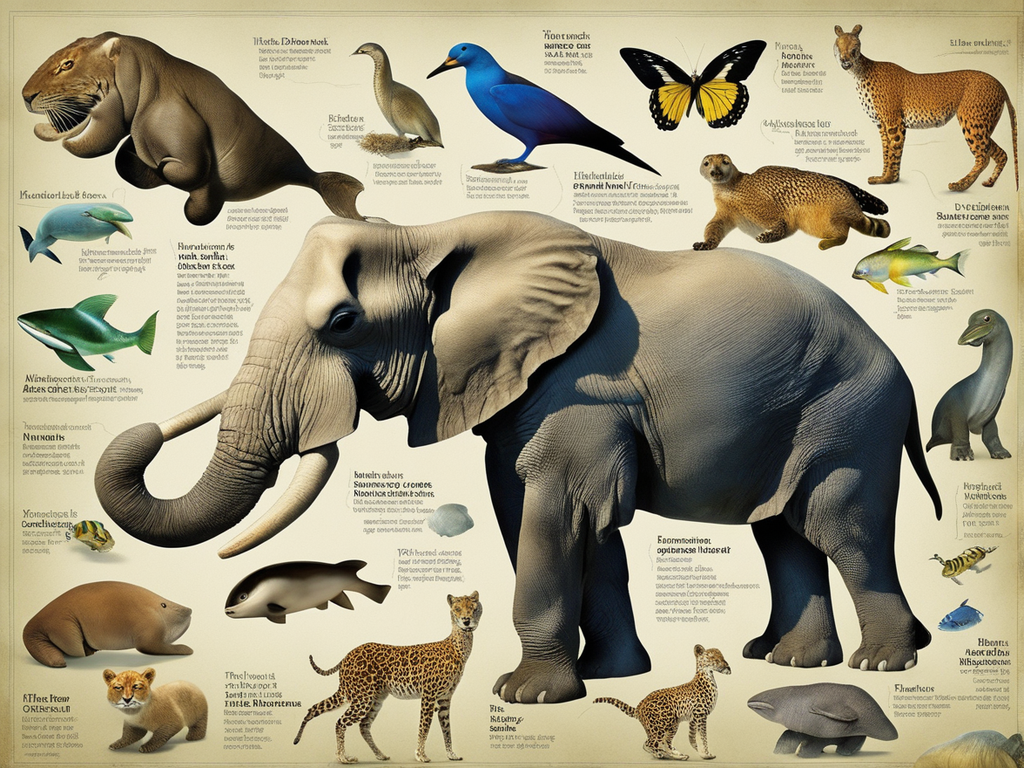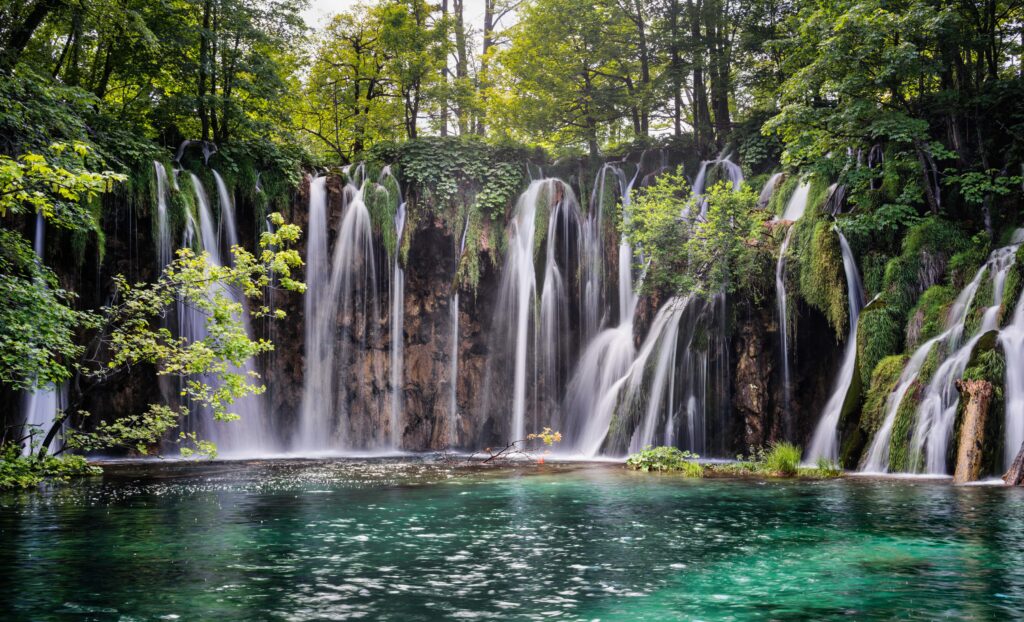Embark on an extraordinary exploration as we delve into the mysteries that lie beneath our feet. From the journey to the center of the Earth to the hidden depths waiting to be uncovered, we invite you to discover the captivating world that exists beneath the surface.
Step into the realm of exploration as we unravel the enigmatic secrets that have puzzled scientists for centuries. The concept of journeying to the center of the Earth has long fascinated the human mind, igniting a yearning to understand the inner workings of our planet.
Beneath Earth’s solid ground lies a vast expanse of unexplored territories waiting to be discovered. With each step deeper into the depths, we uncover new wonders that challenge our understanding of geology and reshape our perspective on the world above.
Through this journey, we aim to shed light on the formation of our planet, the layers that make up its structure, and the remarkable phenomena that occur within its core. From the magnetic field that influences our daily lives to the seismic waves that shake the earth’s surface, we will unravel the mysteries of Earth’s inner dynamics.
But our exploration does not stop there. Venture into the depths of the ocean, where a world unseen awaits. From the dark trenches that stretch for miles to the thriving ecosystems surrounding hydrothermal vents, we will plunge into the heart of marine mysteries.
Join us as we uncover the wealth of resources hidden within the depths and discuss the future prospects of mining and preservation. As we conclude this tantalizing glimpse into Earth’s interior, we invite you to join us in embracing the never-ending fascination of our planet’s unexplored realms.
Formation of the Earth: From Fire to Solid Ground

As we embark on our journey to the center of the Earth, it is imperative to understand the remarkable formation of our planet. The Earth’s formation was a process that took millions of years, transforming a molten core into the solid ground we stand on today.
The journey began billions of years ago when a cloud of cosmic dust and gas collapsed under its gravitational force, giving birth to the Earth. Initially, our planet was a hot and chaotic place, with the molten core at its center providing the very foundation of its existence.
Geological processes played a pivotal role in shaping the Earth. Tectonic plate movement, for instance, caused massive landforms to shift and collide, giving rise to mountain ranges and deep ocean trenches. Volcanic activity erupted in fiery displays, spewing molten rock and gases from beneath the Earth’s surface, altering the landscape and releasing important substances into the atmosphere.
“The Earth’s formation is a testament to the immense power and creativity of our planet’s geological processes. From the violent clashes of tectonic plates to the breathtaking beauty of volcanic eruptions, these forces have shaped our world into what it is today.”
Slowly but surely, the intense heat and pressure within the Earth’s core began to subside, allowing the molten materials to cool and solidify into the Earth’s crust. Over time, this solid ground became the home to an array of life forms, supporting ecosystems and providing a stable environment for living organisms to thrive.
Today, as we stand on the Earth’s solid ground, we are reminded of the incredible journey that our planet has undergone. The formation of the Earth is a testament to the power of nature and the interconnectedness of geological processes that continue to shape our world.
Layers of the Earth: Unveiling the Inner Structure
When it comes to exploring the Earth’s hidden depths, understanding its layers is essential. From the crust, mantle, and core, each layer holds valuable clues about the planet’s formation and ongoing processes.
Starting with the Earth’s crust, this thin outermost layer is where we reside. It is composed of various rocks, minerals, and soils, and its thickness varies across different regions of the Earth. The crust plays a crucial role in supporting life, harboring both land and ocean ecosystems.
“The Earth’s crust, although seemingly insignificant compared to the planet as a whole, acts as a protective shield, preserving the delicate balance of life we experience on the surface.” – Geologist Dr. Emily Thompson
Beneath the crust lies the mantle—a vast, solid layer that extends to a depth of about 2,900 kilometers (1,800 miles). The mantle is predominantly composed of hot, dense rock material. It experiences convective currents that slowly drive the movement of tectonic plates, leading to continental drift and volcanic activity.
The Mantle: A Dynamic Layer of Earth’s Structure
One of the most intriguing features of the mantle is its differentiation into upper and lower sections based on their composition and physical properties. The upper mantle is characterized by partially molten rock known as the asthenosphere, which allows for the flow and movement of the Earth’s lithosphere.
The core is the innermost layer of the Earth, situated beneath the mantle. Comprised of an outer liquid core and an inner solid core, it is primarily composed of iron and nickel. The core plays a crucial role in generating the Earth’s magnetic field, which protects our planet from harmful solar radiation and guides navigational compasses.
- The outer core is in a liquid state due to the extreme temperatures and pressure present at its depth. The movement of molten iron in the outer core generates electric currents, giving rise to Earth’s magnetic field.
- The inner core, despite its intense heat, exists in a solid state due to the extreme pressure exerted on it by the layers above. It is believed to be responsible for the generation of the Earth’s magnetic field, as well as playing a role in seismic wave propagation.
As we explore the layers of the Earth, we not only uncover the intricate structure of our planet but also gain insights into its processes and history. The composition and characteristics of each layer help scientists piece together the puzzle of Earth’s formation, dynamics, and ongoing evolution.
Discovering Earth’s Core: Journeying to the Center
Prepare for an extraordinary expedition as we venture into the depths of Earth’s core, the enigmatic realm that remains largely unexplored. Within the innermost depths lies the essence of our planet’s power and intrigue.
Unveiling the Core’s Unique Properties
The Earth’s core is a remarkable and elusive feature, composed mainly of iron and nickel. This molten sphere, approximately 2,900 kilometers in radius, holds the key to understanding the planet’s innermost workings.
In the words of renowned geophysicist Dr. Katherine Johnson: “The Earth’s core is a mysterious entity that holds secrets about our planet’s formation and evolution.”
As we journey towards the core, we encounter immense pressures and temperatures surpassing those found on the surface. These extreme conditions create an extraordinary environment, shaping the behavior and properties of the core.
Unraveling the Magnetic Field’s Mysteries
One of the core’s most intriguing aspects is its role in generating the Earth’s magnetic field. This invisible shield, which extends far beyond our atmosphere, protects the planet from harmful solar radiation and cosmic particles.
Scientific investigations conducted through a combination of observation, mathematics, and physical simulations have provided invaluable insights into the complex interplay between the core’s movements and the creation of the magnetic field.
Decoding Secrets through Seismic Waves
Seismic waves, generated by earthquakes and other seismic events, serve as powerful tools for deciphering the mysteries of the core. As these waves propagate through the Earth, they interact with the different layers, revealing valuable information about their composition and density.
By analyzing the behavior of seismic waves, scientists have been able to map the structures within the core and gain a deeper understanding of its properties. This information allows us to refine our models and theories about the core and its role in shaping our planet.
- Seismic waves provide essential data for studying the Earth’s core
- Scientists use various techniques to analyze and interpret seismic wave data
- Understanding seismic wave behavior leads to new insights into core dynamics
As we delve into the depths of Earth’s core, our understanding of the planet’s inner workings continues to grow. With each discovery, we unlock a piece of the puzzle, unraveling the secrets held within the unfathomable depths.
Unusual Phenomena: Exploring Earth’s Interior Dynamics

Within the depths of the Earth, a world of extraordinary phenomena awaits discovery. These unusual occurrences shed light on the dynamic forces that shape our planet. From the mesmerizing generation of geothermal energy to the powerful and unpredictable earthquakes that rock the Earth’s surface, these phenomenon serve as a reminder of the immense power and intricacy of our planet’s interior.
Geothermal Energy: A Unique Power Source
One of the most fascinating phenomena within the Earth’s interior is the generation of geothermal energy. Deep below the surface, intense heat is produced by the molten core. This heat is harnessed and transformed into a sustainable and renewable energy source. Geothermal power plants utilize the natural heat to produce electricity, reducing our reliance on fossil fuels and helping to combat climate change.
Earthquakes: Unleashing the Earth’s Fury
Earthquakes, while often destructive, are an integral part of the Earth’s dynamic nature. These powerful seismic events occur when tectonic plates, the massive pieces of Earth’s crust, collide or slide past each other. The release of energy during an earthquake can cause the ground to shake violently, resulting in widespread damage and loss of life. Understanding the causes and patterns of earthquakes is crucial for predicting and mitigating their impact.
“Earthquakes are not only natural disasters; they are also nature’s reminders of the tremendous forces that shape our planet.” – Dr. Megan Harrison Renowned Geologist
Plate Tectonics: The Dance of Continents
Plate tectonics is a groundbreaking theory that explains the movement of Earth’s lithospheric plates. These massive pieces of the Earth’s crust float atop the semi-fluid mantle, creating a dynamic system. The constant shifting and colliding of these plates give rise to mountains, valleys, and even the formation of new land. Plate tectonics not only plays a vital role in shaping the Earth’s surface but also influences geohazard activity, such as earthquakes and volcanic eruptions.
- The Earth’s lithosphere is divided into several major plates, including the Eurasian, North American, and Pacific plates.
- Plate boundaries, where plates meet, can be divergent (moving apart), convergent (moving towards each other), or transform (sliding past each other).
- Tectonic activity at plate boundaries is responsible for the creation of mountain ranges like the Himalayas and the formation of deep oceanic trenches, such as the Mariana Trench.
Exploring these unusual phenomena and understanding the intricate dynamics of the Earth’s interior are essential for unraveling the mysteries of our planet. By studying these incredible forces, we can gain insights into the past, present, and future of Earth’s geology and work towards harnessing its power for the betterment of humanity.
Deep-Sea Exploration: Revealing the Secrets Beneath the Oceans

Embark on an extraordinary journey as we delve into the depths of our planet’s oceans, uncovering the mysteries of the deep-sea. Through deep-sea exploration, we gain insight into the hidden wonders that lie beneath the surface, offering a glimpse into a world few have witnessed.
Unveiling Oceanic Trenches: The Great Depths
One of the most intriguing aspects of deep-sea exploration is the discovery of oceanic trenches. These vast and enigmatic underwater chasms plunge to unimaginable depths, reaching up to 36,000 feet below sea level. These trenches, such as the Mariana Trench in the Pacific Ocean, fascinate scientists with their sheer magnitude and provide valuable insights into Earth’s geologic processes.
Exploring Hydrothermal Vents: Otherworldly Ecosystems
Deep-sea exploration has revealed the existence of hydrothermal vents – unique ecosystems that thrive in extreme conditions. These vents, located along the mid-ocean ridges, spew forth mineral-rich, superheated water, creating a haven for a diverse array of marine life. Organisms found here have adapted to withstand the extreme pressure, darkness, and high temperatures, unlocking the secrets of life’s resilience.
“As we explore the deep-sea, we discover that life can thrive in the most inhospitable places on Earth, challenging our understanding of what is possible.”
The Splendor of Marine Life: Diversity in the Deep
Deep-sea exploration provides us with a front-row seat to witness the awe-inspiring diversity of marine life. From bioluminescent creatures that light up the darkness to elusive and mysterious deep-sea fish, the deep ocean is teeming with life. Scientists continue to make remarkable discoveries, shedding light on the intricate web of ecological relationships and the interconnectedness of all life forms on our planet.
- Discovering new species: Expanding our knowledge of marine biodiversity.
- Understanding adaptations: Examining how organisms survive in extreme environments.
- Conservation implications: Recognizing the importance of protecting these fragile ecosystems.
Through deep-sea exploration, we gain a deeper appreciation for the vastness and complexity of our oceans. As we continue to unveil the secrets hidden within these uncharted depths, we embrace the opportunity to better understand our planet and its intricate ecosystems.
Future Prospects: Mining the Depths and the Search for Resources
As we delve deeper into the mysteries of the Earth’s interior, the question arises: what does the future hold for exploring the depths of our planet? One potential avenue of exploration is the mining of valuable resources from the subterranean depths. The Earth is a treasure trove of minerals and precious metals, and mining these resources could provide significant economic benefits.
However, as we proceed with future exploration and mining endeavors, it is crucial to consider the impact on subterranean habitats. These habitats are home to unique ecosystems that have adapted to the extreme conditions found beneath the Earth’s surface. Preserving these habitats is not only essential for the survival of the delicate organisms that reside there but also for the scientific knowledge we can gain from studying them.
Future exploration endeavors must prioritize sustainable mining practices and responsible resource extraction. Environmental impact assessments and mitigation plans should be integral components of any mining operation, ensuring that the delicate balance of subterranean ecosystems is not disturbed.
“Mining resources from the Earth’s interior holds great potential for economic development, but it is imperative that we approach this endeavor with caution and consideration for the ecological consequences. By employing sustainable mining techniques and preserving subterranean habitats, we can strike a balance between economic growth and environmental stewardship.” – Dr. Jane Mitchell, Environmental Scientist
In addition to mining resources, future exploration of the subterranean depths could unveil new scientific discoveries. Deep within the Earth lies a wealth of geological information waiting to be uncovered. By studying the rocks, minerals, and geological formations found in the Earth’s interior, scientists can gain valuable insights into the planet’s history and processes that shape its surface. These discoveries could potentially revolutionize our understanding of Earth’s evolution and provide insights into geological phenomena, such as earthquakes and volcanic eruptions.
As we embark on this journey of future exploration, it is essential to balance our quest for knowledge and resources with the conservation and preservation of subterranean habitats. By adopting sustainable practices, we can ensure a harmonious coexistence between scientific exploration, resource extraction, and the preservation of Earth’s hidden wonders.
The Fascination of Earth’s Interior: A Never-Ending Exploration
As we conclude our journey to the center of the planet, the fascination of Earth’s interior continues to captivate scientists and researchers alike. The ongoing exploration of the geological wonders beneath our feet unveils a world of scientific discoveries and endless possibilities.
In the realm of geology, the study of Earth’s interior holds the key to understanding our planet’s formation, its dynamic processes, and the mysteries that lie within. Through meticulous research and groundbreaking technologies, geologists have made remarkable discoveries, shaping our knowledge of the planet and its evolution.
From the exploration of Earth’s layers, including the crust, mantle, and core, to the investigation of unusual phenomena such as earthquakes and plate tectonics, the ongoing exploration delves deeper into the secrets of our planet. These scientific endeavors not only expand our understanding of Earth’s past but also have significant implications for predicting future geological events.
As we continue to explore the depths of the Earth, the fascination with its interior remains unwavering. The intricate connections between geological processes, the resources hidden within, and the fragile ecosystems that thrive in subterranean habitats highlight the importance of ongoing exploration. Unlocking the mysteries of Earth’s interior is not only a pursuit of knowledge but also a call to preserve and protect our planet’s fragile equilibrium.



































